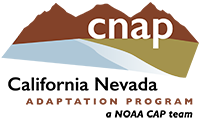NATURE-BASED SOLUTIONS FOR COASTAL ADAPTATION IN SOUTHERN CALIFORNIA
CALIFORNIA NEVADA ADAPTATION PROGRAM
Mission: To assist local communities with coastal adaptation planning by improving understanding of coastal dune dynamics and shoreline response to flooding. The project also includes integrating indigenous stewardship values and leadership roles into coastal adaptation visions and solutions.
RESEARCH AND COMMUNITY PROJECTS
1. Evaluating trends and projections in extreme coastal flood conditions and methods for documenting physical and socioeconomic impacts.
A research effort focused on gathering local data on coastal flooding to help define varying thresholds for mild and significant flooding. The research team is also identifying data and methods useful for evaluating socioeconomic impacts of flooding events using community observations, emergency reports, and flood databases.
Research Partners: The Center for Climate Change Impacts and Adaptation at Scripps Institution of Oceanography
Community Partners: City of Imperial Beach
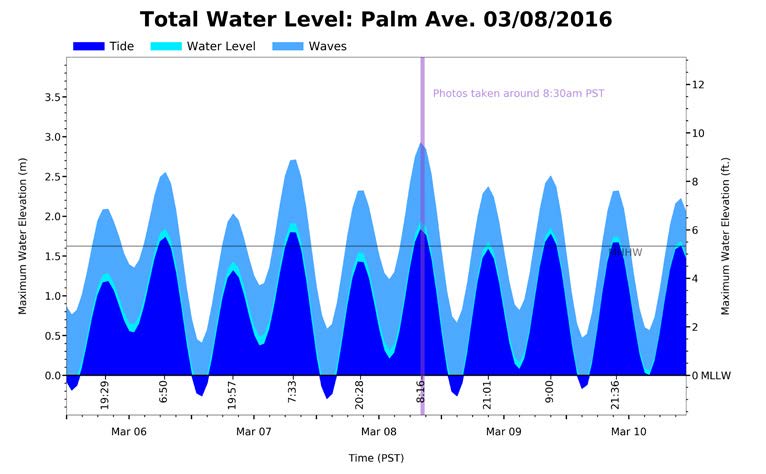
2. Assessing coastal dune restoration approaches for increasing shoreline resilience.
A research partnership with the California Coastal Dune Science Network. The Network represents a consortium of researchers, coastal managers, and community organizations developing best practices and expertise for enhancing coastal dunes as a nature-based resilience strategy. Research activities include:
- Mapping coastal dunes in Southern California and characterizing the range of dune restoration activities at these sites.
- Assessing dune response to recent restoration efforts and coastal hazards.
- Developing indicators and frameworks for assisting communities with dune restoration siting, design and adaptive management
Research Partners: California Sea Grant, UC Santa Barbara, USGS
Community Partners: Local and state coastal and beach managers from San Diego to Santa Barbara
3. Integrating Indigenous community voices in coastal resilience planning.
A community partnership to support Tribal-led coastal initiatives. Activities include:
- Providing meaningful engagement with Tribes training for non-Tribal partners working in coastal management.
- Providing opportunities for indigenous engagement, leadership and stewardship in coastal restoration activities.
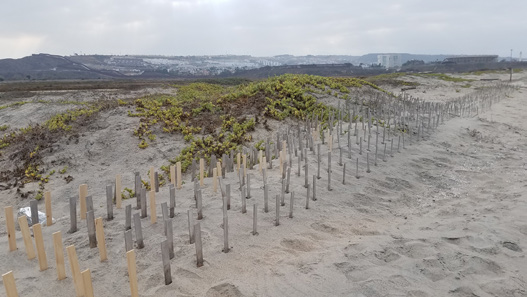
BORDER FIELD STATE PARK
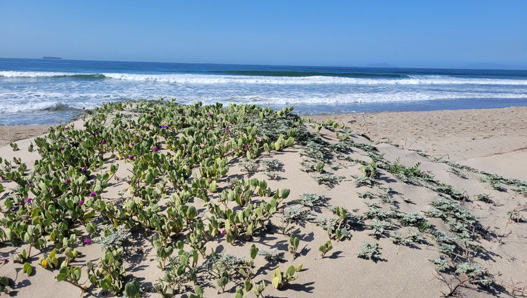
ORMOND BEACH DUNES & LAGOON
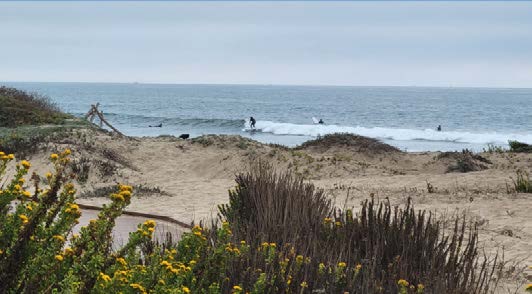
SURFER’S POINT VENTURA
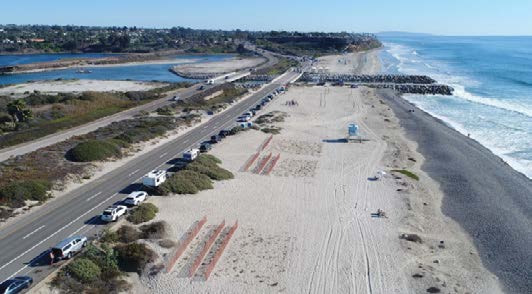
PONTO BEACH, CARLSBAD
MORE INFORMATION
Laura Engeman, Lead, SIO
lengeman@ucsd.edu
